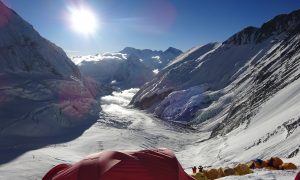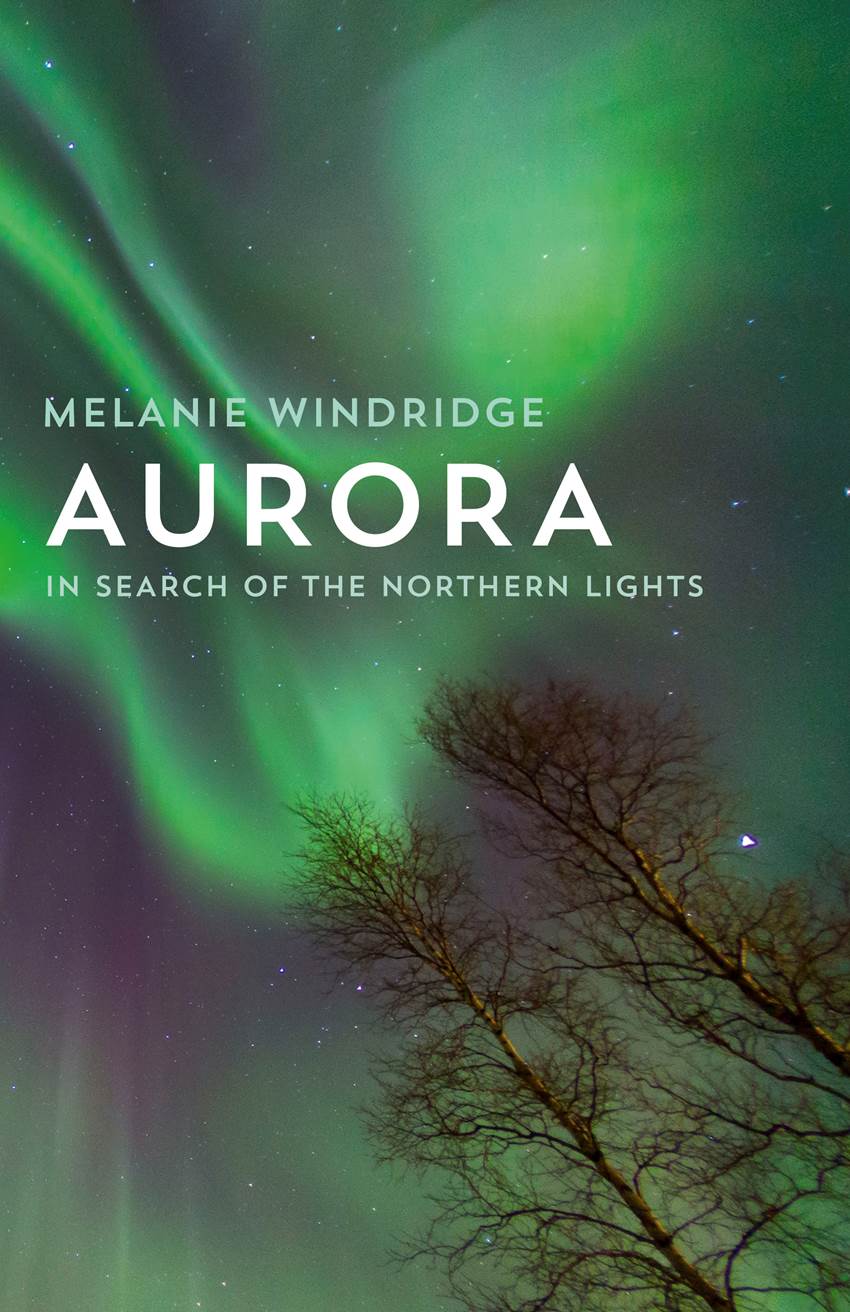
A sunny evening at Camp 3, looking out over the Western Cwm at the clouds in the Khumbu valley.
Most Everest climbers are now at Base Camp and into their acclimatisation rotations. Once these are over – by around the end of April – climbers will be waiting for a “weather window” for going to the summit. This weather window is a period of stable weather when the jet stream moves and winds on the summit drop.
The summit of Everest is so high that it sticks up into the lower jet stream, a narrow band of high-speed wind. Up here, winds can be higher than 100 miles per hour (160kmph).
Everest weather in 2018
Last year saw an unprecedented good weather window of 11 days of safe summit weather, which allowed over 800 people (climbers and support) to summit Everest. It was a record year.
As well as a good, long weather window, the snow conditions on the mountain were good. Ideally you want not too much, not too little – just enough. And then you want it to freeze at the right time so it gives a nice firm surface. Deep snow is very difficult to walk through, like walking in sand, so it can be very tiring. Thankfully, we didn’t have any of that. The Western Cwm was nicely frozen, and even on the summit ridge there were firm steps frozen in. In 2018 we were pretty lucky.
Of course, climbers who have recently reached Base Camp are hoping for equally good conditions, but there are indications that the weather on Everest could be worse this year.
Indications that Everest weather could be bad this year
This winter, it snowed more than in over 40 years in Nepal and India saw stronger rainfalls than usual. It even snowed in Kathmandu, which very rarely happens. Under these conditions, preparations, such as rope-fixing can be delayed, which means that the window for summit attempts decreases.
And if they continue to get snow it could make conditions on the trail trickier. Heavy snow also increases the avalanche risk. For regular updates, follow the Everest blog by seasoned mountaineer Alan Arnette.

Melanie on a walk during the waiting time at Base Camp. The summit of Everest is peeking up in the background.
Whatever the conditions, teams will have to get themselves acclimatised and ready and wait at Base Camp (perhaps for a week or two) while the route and camps are being prepared higher up and the managers watch the weather forecasts. It’s crucial to be patient.
In the past, there have sometimes been problems with overcrowding, which are exacerbated under bad weather conditions as more people want to attempt the summit at the same time. These days, crowd management is better. But with poor weather a possibility, this management may be challenged.
Improvements in mountain weather forecasting
Improved weather forecasting over recent decades has improved safety on Everest but mountain weather forecasting is still difficult. Weather forecasting might not seem very exciting, but the facts and figures behind the scenes are really quite astounding.
Melanie spoke to Alex Deakin at the Met Office when she prepared for climbing Everest. He shared some spectacular figures about the computing power necessary to model weather accurately and how this has improved over the last 30 years. Find out more in this 5-minute video of Melanie’s Science of Everest series.
Video: Melanie visits the Met Office and talks to Alex Deakin to find out how weather forecasting helps climbers on Everest, and shares her experience of the weather when climbing Mount Everest in 2018
This article in Outside Magazine lists “What to Watch for on Everest This Year” including climbers to watch, more climbers trying alternative routes, weather conditions, crowd management, a potential lack of qualified Sherpas and rescue companies tackling insurance scams.
We wish all the climbers this season lots of luck and favourable conditions!

